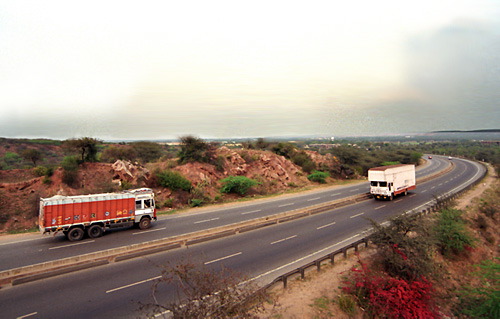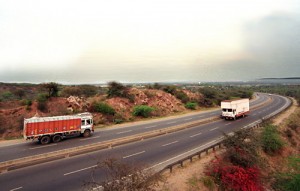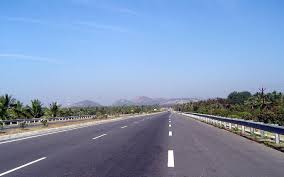I enter the last phase of my journey through the Golden Quadrilateral. I begin at Bharuch, called ‘Bhrigukachha‘ since very ancient times by Indians, and ‘Barygaza’ by the Greeks who considered it an important trading port in India. The city flourishing on river Narmada, has had a significant place in Hindu mythology as the dwelling of Rishi Bhrigu and Parashurama. The industrial might of Gujarat is readily represented here by various multinational companies having their headquarters.
The next destination comes out to be Vadodara or Baroda, another industrial city, ‘Sanskari Nagari‘, the capital of Gaekwad dynasty, famous for its navratri festival. I start on National Expressway 1 which has direct connectivity to Ahmedabad. Though, I must not forget Ankleshwar, which has abundant oil fields and Anand, the city of AMUL dairy.
I reach my next big destination, just within 1-1.5 hrs from Vadodara, from a high-speed expressway. Ahmedabad, the 5th largest city of India, was established by Sultan Ahmed Shah of Gujrat Sultanate in 1411 AD. Since then, we get a glimpse of gujarati culture and tradition through its various temples, mosques and indigenous pieces of architecture. While Sidi Sayyid Mosque, Teen Darwaza and Sarkhej Roza give a tinge of Islamic tradition, the ISCKON temple, Gandhi Ashram near Sabarmati river and Dad Hari ni Vav (step-well) portray a true mixed culture. A detour to Gandhinagar, the planned capital city of Gujarat, also adds to it, the Akshardham Temple and Adalaj ni Vav, along with its varied special economic and IT zones.
I am already feeling royal, owing to the fact that now I enter the land of kings, or Rajasthan. The gateway to south-western part of the state is a splendid ‘City of Lakes‘ – Udaipur. The capital of Mewar Kingdom since downfall of Chittor is home to 2 of the top 10 luxury hotels in the world. One of the hotels has the costliest presidential suite in the country. The lakes Pichhola and Fatehsagar illuminesce with their natural beauty, so as the fortresses of Sajjangarh and City Palace. I reach Chittaurgarh, the former capital of Sisodia dynasty of Mewar. The fort lies at such a strategic location over a hill, that it had attracted many emperors as a place worth beseiging since medieval times. The Khiljis attacked it once, so as Mughal emperor Akbar. The fort is also the site of Tower of Victory, built by Maharana Kumbha as a symbol of their dominance over Gujarat and Malwa.
I scroll ahead to Bhilwara, the ‘City of Textile and Looms’, and important city from the viewpoint of industrial development of the state. From being economically powerful, I now feel religious. I feel to chant old Sufi songs in their full grandeur as I visit the shrine of Saint Moinuddin Chisti at Ajmer. The Dargah has been holy since the time of Delhi sultans. Many emperors have visited, enchanted, donated and modified the place in order to extend its glory to the zenith. The six-day Urs of Khwaja is famous among the commons and Nizam Gate is one of its kind exaggerating the wealth of the kings.
The true representation of ‘Rajvanshi’ is seen when we reach the capital, Jaipur. The fame of Hawa Mahal, City Palace and the astronomical observatory Jantar Mantar (the largest of its kind) is not something unheard of. Besides, the Amer fort, having its close associations with the Mughals, is the most beautifully maintained structure in the entire state. We see the handicrafts in their original form as also the famous Jal Mahal. It makes me sad as I reach the end route to my proud journey on the highway. I cross Rajasthan, entering Haryana and make my final pass through Gurgaon, which was said to be the city of Guru Dronacharya, now an important commercial hub, lying in the National Capital Region of Delhi, better known as Delhi NCR.
This was my travel monologue, which aimed to display the abundance of diversity not only in the geographical landscape, but also in the cultural landscape of India, and Golden Quadrilateral is just a dip in the ocean.
Click here for government certifications





9 Comments. Leave new
I suggest you that you should post all your 6 parts of the golden quadrilateral series in a travel blog. I have read 5 of the 6 parts (part 2 hasn’t been published at the time I wrote this comment) and all 5 are fantastic blogs. It actually will help many tourists who try to find out which places to visit on the internet. This is a very commendable job. I must say, these 6 parts were more than a “dip in the ocean”.
Superbly done! All the parts are just commendable. Good work. Keep it up!
Dear Akul ! I will look forward into your suggestion. Due to some technical difficulty, Part 2 cannot be published. But thank you for your appreciation for the remaining parts, it was intended to make people aware about the cultural diversity that existed in India.
Amazing work..Good job!
Good effort
Thank you. This article is for those people who wish to travel North-Western part of India.
very well done
Liked it!
udaipur is the best place to visit. looking forward to visit it soon.